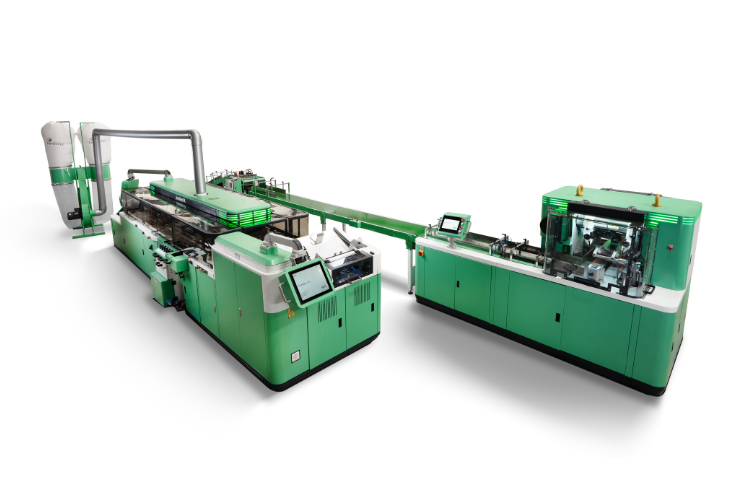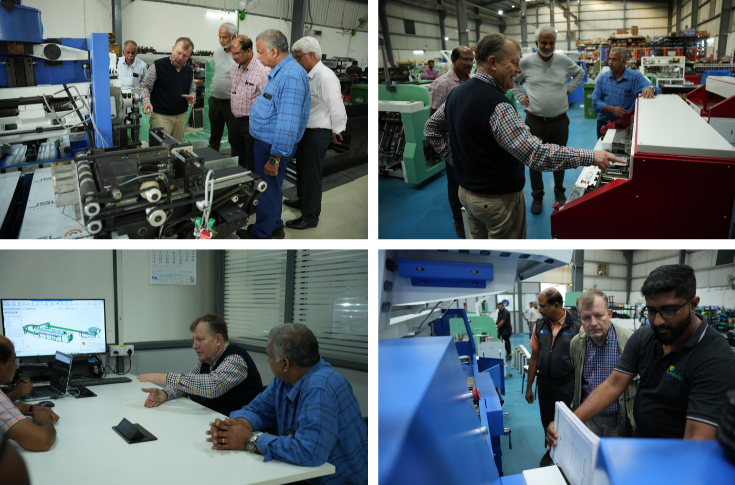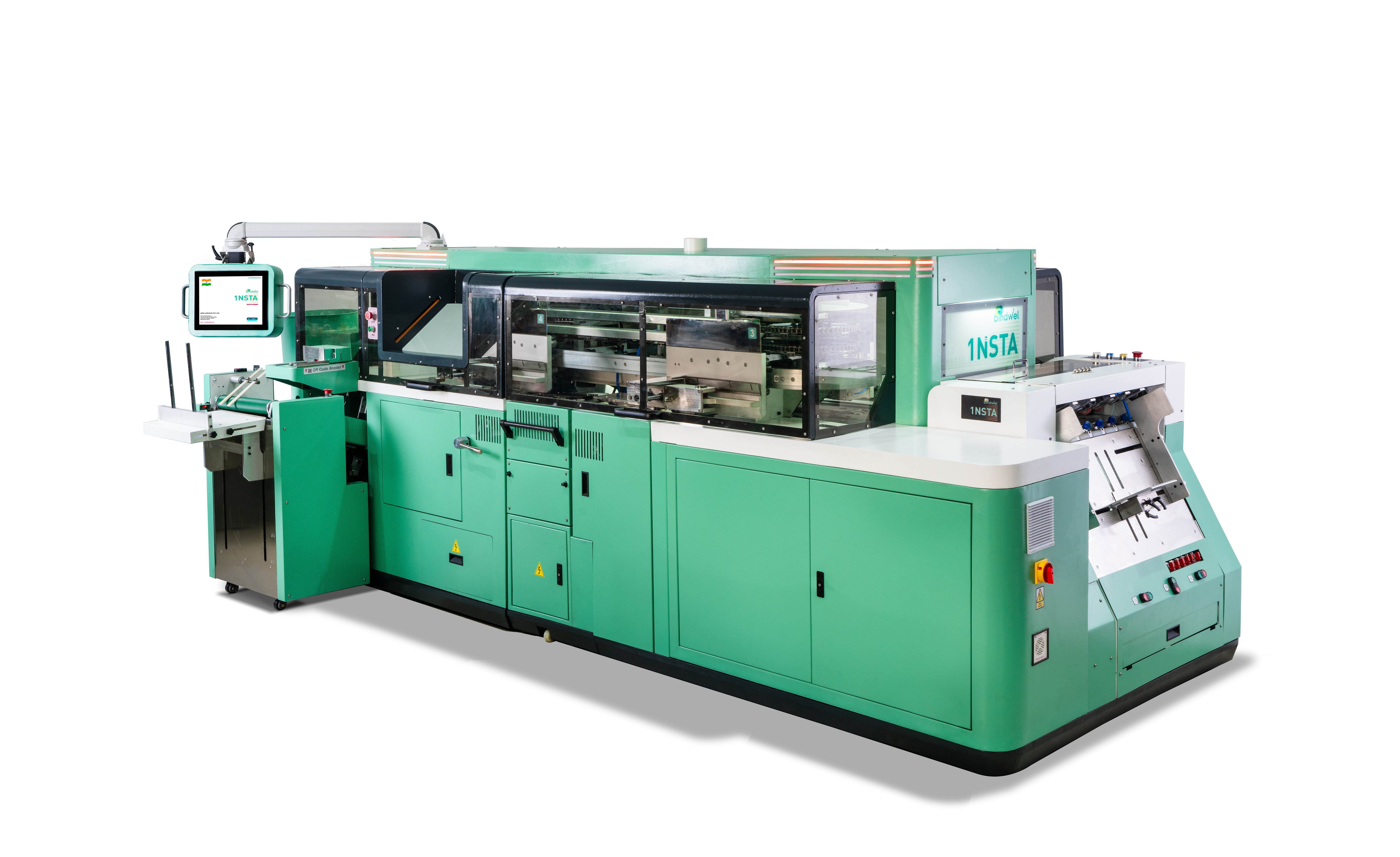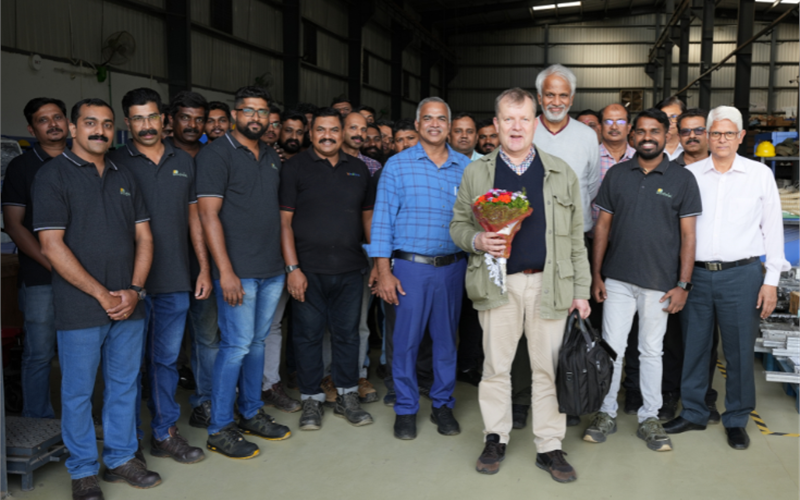The Drupa countdown: Spotlight on Bindwel
The Bindwel stand at Drupa has been themed as Spectrum of Innovation: Creating the future of bookbinding. While speaking to PrintWeek, Kai Buentemeyer, the director of the Bindwel-Stelda group said, "We will introduce three pathbreaking concepts: One for ultimate flexibility in the one book model, another for streamlined efficiency with a standardised book formats and the third, the freedom to choose a mix of flexibility and efficiency as you need it. These machines embody the future of bookbinding.
09 May 2024 | By Ramu Ramanathan
Ramu Ramanathan (RR): Today, Bindwel has become a reputed solution for the manufacturing of books, and a lot of large and boutique book print firms have started allocating budget to book binding. What is your messaging going to be at Drupa?
Kai Buentemeyer (KB): The printed and bound book has enjoyed a multi-year rally, which will continue. There are multiple reasons to tool up. If you are a printer of books, but you have so far farmed out the binding or sent your customers to binding specialists for print finishing, Bindwel hopes to ensure you bring those services in-house for speedier service. Bindwel can help you make this an easily manageable project.
RR: And if you're a bookbinder?
KB: If you are a bookbinder, the present market environment is likely to make you feel your output constraints. Bindwel can help you overcome those in an efficient manner. Also if you are a book printer with in-house bookbinding capability, it is time to have a hard look at the equipment that you have: Are they occupying too much space, are they taking a lot of time to set-up, are they wasting energy and consumables.
RR: So, Bindwel will be showcasing the entire spectrum of capabilities for a book person to choose from?
KB: Oh yes.
RR: The Bindwel team collects data in order to ensure better accountability and better customer service. What do your reports suggest? Volume growth? Increased revenue? New territories? More titles?
KB: It is definitely all of those. What we do not see are longer print runs. Increased variety of publisher’s offerings and streamlined logistics are strong forces reducing print runs.
RR: The last time we spoke in Delhi and Bengaluru, you underscored the importance of customised massification of textbooks. What do you mean by this?
KB: Massification is a process by which you make a luxury product available to the mass market. In bookbinding this would mean standardising your output so as to bring up efficiencies and bring down costs. But marketers have their work cut out here, too. Book print value chain has been trying to customise to stay differentiated, and that drove the product developments in the past. A product enhancement or a service improvement only deserves to be called thus if there are enthusiastic customers paying the required premiums. Customise where it is appreciated. Where it isn’t, streamline production. Don’t customise for customisation’s sake.

Bindwel Ekam
RR: How can technology make this possible?
KB: Technology, in this case, will have to help by allowing for economical production and fast turnaround.
RR: Most textbooks are printed using web offset machines that come with fixed cut-offs, fixed formats. Most book formats are A4 plus or minus, the change of length of spine is within the range of 25 to 29 cm, and the aspect ratios are similar. What will this require? Re-engineering? Re-thinking? Or re-booting the entire process?
KB: At Bindwel, we are trying to start by demonstrating the possible rewards. Take a very good look at your processes and your resources. Unused resources, or unused capabilities are waste. In many cases, it was a waste to create them but this cannot be undone. Don’t throw good money after bad is about the soundest business advice that ever was. But maintaining superfluous capacities is likewise waste, and such waste can be stopped. Once our customers are ready to embark on this journey, Bindwel stands ready to help them create right-sized capacity, ultimately, with no waste.
RR: Follow up question. Will the publishers accept your mantra? What's been the feedback thus far?
KB: It is too soon to say. But I am relaxed, as far as that is concerned. We can start by cutting inefficiencies without reducing services to publishers.
RR: Most book print firm owners in South East and Middle East Asia, East Europe, South America and African countries have opted for pre-owned European or Japanese binding lines or a combination of manual and offline processes? Any alteration in this mindset? What impact does it have on the OEE?
KB: By definition, a pre-owned line is your ideal solution if you want to follow in the footsteps of the previous owner. Allow me to carefully suggest that was very often the case in developing economies in the past. Today, I am convinced that there are few demands left in the markets that are profitably fulfilled by following in the footsteps of others.
Combination of manual and offline processes can be a highly efficient solution for a few applications, and that is where pre-owned equipment might have a future, but we are definitely talking about machines or modules, not lines. Where complete or almost complete automation is required, and those cases will grow in number, there will be fewer and fewer applications where a pre-owned solution is sustainable. Remember that we are now in the realm of complete lines. You will either waste effort by producing with great OEE but not be able to address the best markets or vice versa.

RR: You're a German engineer with more than three decades of experience in the book industry. During this period you have donned innumerable hats as a design and manufacturing engineer, financial specialist, global CEO, environmental scientist and presiding over global organisations related to manufacturing and print. Today, you've a dream. Your dream is the creation of affordable textbooks through a lean post-press solution.
KB: Careful, it's early days! I am hoping for many exchanges at Drupa that will let me speak with more confidence.
RR: Okay, please describe the first steps ...
KB: Yes, I can describe the first steps. I have taken a small subset of issues and sketched a way how they could be resolved elegantly and cost-effectively and then requested the factory to come up with a demonstration unit in a very short time with very limited means. The results are very promising. But I would rather come back to this conversation at the end of the year.
RR: You have studied the manufacturing lines of FMCG products and wondered when bookbinding can reach this level of automation in the manufacturing of a book?
KB: Yes. And let me share the most striking observation. The first time that I received instruction in the planning of a book manufacturing facility, I was told the most important thing to know was that in a book plant “we have no control on what we are going to produce once we go on-stream”. Right at the beginning of my first discussion with an FMCG project manager, I was told that “we do nothing, not the tiniest little bit, before we know exactly what we are going to produce every single hour of the existence of our new system”.
RR: Interesting.
KB: The point is, book manufacturing needs to learn to apply that principle, not totally, but to a great extent.
RR: You have also invested time in understanding how commercial book printing can learn from digital printing, where personalisation is focused on content and not on formats.
KB: This goes back to what I said about customised massification earlier. Show me the money for your customisation!

Bindwel Insta
RR: Today, India is perhaps the largest consumer of textbooks in the world. The government prints more than three billion textbooks every year. What more can we do to ensure more efficiency and less waste?
KB: From the outside looking in, I saw how India tackled nationwide sales tax, which left me believing that things can be done in India. India has the largest number of school going children, about 250 million. And the Government is focused on increasing the gross enrollment ratio.
With such numbers, all Indian textbooks for primary and secondary education should be manufactured by systems that are fully automatic from paper warehouse to book warehouse with not much more than stop/start buttons to operate them. The Bindwel team and I stand ready to explain how as soon as collaborative decisions are taken to work towards such systems.
RR: Final question: The book technologist Tony Clark says making a good durable book is a combination of science and aesthetics and arithmetics and a long life. How does Bindwel score in these four departments?
KB: To be perfectly frank, I am not quite sure where Tony was going with that.
RR: I think he meant the perfect marriage of form and content ...
KB: Ok. The Bindwel team has ample fire power in science and arithmetic. For publishers and printers with eyes for aesthetics, I am sure we can cater for that. Long life? If Tony was hinting at the experience of the practitioner, we have plenty of that. As far as the durability of the product goes, my answer is the same as for aesthetics: ask, and it shall be provided.
RR: Thank you and all the best for Drupa.
KB: Do visit our stall Hall Number 6, Stand B04.












 See All
See All